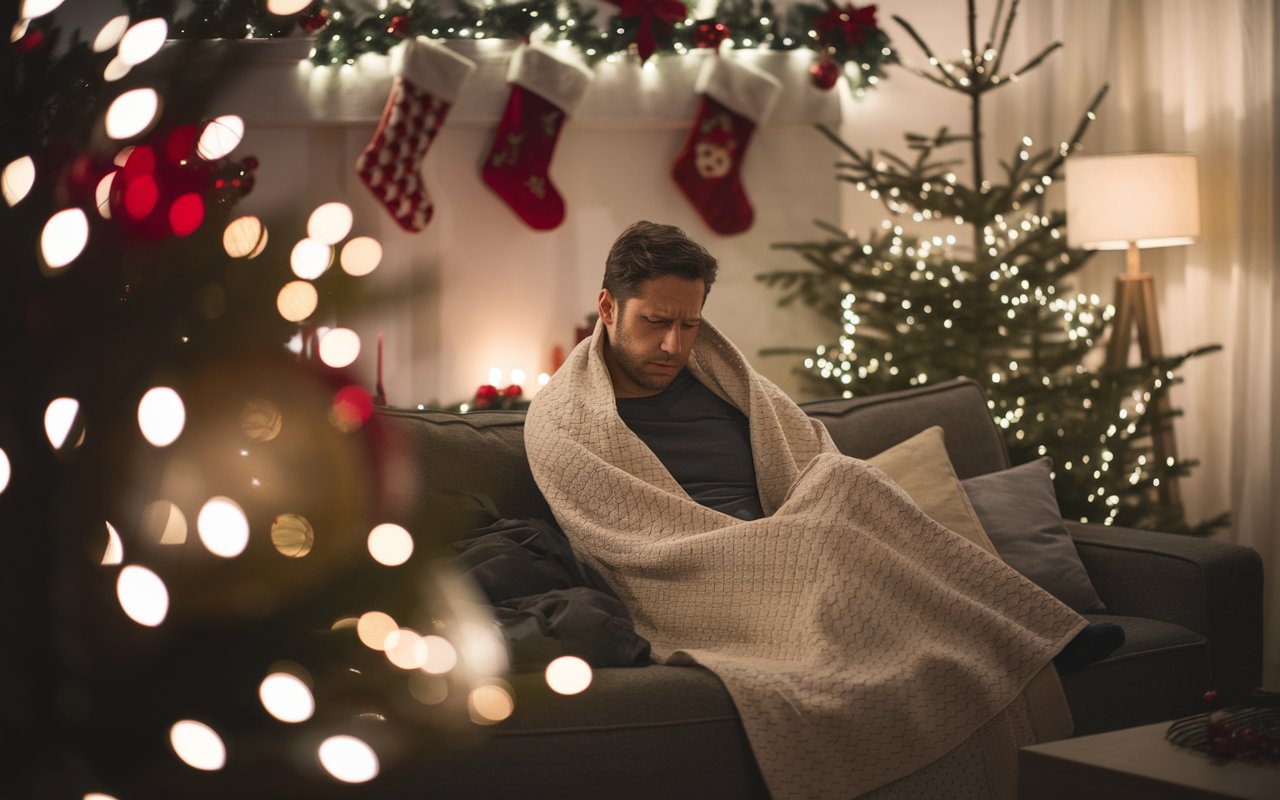Babies often bury their faces while sleeping due to comfort or reflex. It’s a soothing action rooted in their development.
Parents usually observe this behavior as their infants find cozy positions for sleep. Even in the womb, babies tend to nestle into soft spaces, and this behavior often continues after birth. Ensuring their comfort, babies might press their faces against soft surfaces mimicking the tight, secure feeling of the womb.
This action can also stem from the rooting reflex, where babies naturally turn their head and nuzzle against something when their cheek is stroked. Though common and typically harmless, it’s crucial for parents to monitor their sleeping environment to maintain safe sleep practices. Safe sleep guidelines suggest keeping cribs clear of loose bedding, which includes checking for safe positioning during rest. While this behavior is natural and often benign, maintaining vigilance helps ensure the safety and well-being of the child.
The Mystery Behind Babies Burying Faces While Sleeping
Parenting brings a whirlwind of surprises, including the way babies sleep. Many parents notice their infants burying their faces into blankets or mattresses during slumber. This act, while cute, often raises concerns about safety and the reasons behind such behavior. Unveiling this mystery provides insights into the innate behaviors of infants and the comfort they seek in their sleep environment.
Innate Behaviors And Comfort
Babies come into the world with built-in behaviors crucial for their development. These reflexes and instincts help them navigate the world. When babies bury their faces, it may relate to these inborn tendencies. This behavior often reflects their need for security and comfort. It’s similar to how they experienced closeness in the womb.
- Soothing themselves back to sleep
- Finding familiarity by simulating the womb environment
- Engaging their touch and smell senses which are highly developed
Babies enjoy snug surroundings and often recreate this feeling when they’re outside the womb. By burying their faces, they may feel wrapped and held, much like they were before birth.
Possible Reasons For Face-burying
While comfort plays a pivotal role, other factors contribute to this behavior:
| Reason | Explanation |
|---|---|
| Self-Soothing | Babies might bury their faces as a way to calm themselves. |
| Sleep Position Preference | Some babies prefer certain positions that involve face-burying. |
| Exploration | Infants are learning about their environment through touch. |
| Overstimulation | Burying their face can reduce stimuli, helping them to relax. |
| Temperature Regulation | Seeking the right temperature can lead to snuggling into a surface. |
Understanding these innate behaviors and possible reasons can put a parent’s mind at ease. Babies have unique ways of finding comfort and security in their new world. Face-burying, a common practice among some infants, is usually a harmless part of this process.
:max_bytes(150000):strip_icc()/why-do-cats-sleep-on-your-face-dc9133cf48f04e68b49febd3c5b255b4.png)
Credit: www.dailypaws.com
Understanding The Risks Involved
When a baby buries their face while sleeping, it’s adorable yet worrying.
Parents often ask why babies do this. Babies may find comfort in this position,
replicating how they felt in the womb. Knowing the risks this pose is vital for keeping them safe.
Suffocation Hazards
Suffocation is a serious risk when babies sleep face down. Young infants lack the strength and coordination to change their head position when breathing becomes difficult. Soft bedding can also trap carbon dioxide around the baby’s face. It increases the risk of suffocation. Here’s what every parent should ensure:
- Use a firm mattress in your baby’s crib.
- Avoid soft bedding like pillows, blankets, and bumpers.
- Keep toys and plush animals out of the crib during sleep.
- Practice safe sleep habits following pediatric guidelines.
The Role Of Sleep Position In Sids
The Supine position, or sleeping on the back, is best for babies. This position reduces the risk of Sudden Infant Death Syndrome (SIDS). Sleeping face down or on the stomach may make it harder for babies to breathe. Parents should know the best practices to protect their child:
| Do’s | Don’ts |
|---|---|
| Always place baby on their back to sleep. | Let baby sleep on the stomach or side. |
| Keep the sleep area close to your bed. | Share the same bed with your baby. |
| Maintain a comfortable room temperature. | Overheat the baby with extra clothing or blankets. |
Safety Guidelines For Infants’ Sleep
As parents, we always want our babies to be safe, especially when they’re sleeping. Observing your baby bury his face can be cute but raises safety concerns. Let’s dive into the guidelines you should follow to ensure a peaceful and secure slumber for your little one.
Appropriate Sleep Positions
Babies need to sleep on their backs. This position is the safest and reduces the risk of Sudden Infant Death Syndrome (SIDS).
- Always place your baby on his back for every sleep.
- Avoid letting your baby sleep on their stomach or side.
- Positioning devices are unnecessary and not recommended.
The Importance Of A Safe Sleep Environment
Your baby’s sleeping area is crucial for safety. A simple, firm mattress in a crib is vital. Keep soft objects and loose bedding away.
| Do’s | Don’ts |
|---|---|
| Use a firm and flat mattress | No pillows or blankets |
| Fit the sheet snugly | Avoid stuffed animals in the crib |
| Keep the room cool | No crib bumpers |
Maintain the crib’s simplicity and ensure enough airflow. Monitor room temperature to prevent overheating. Keep baby’s crib in the same room where you sleep for the first six months, at least.
Monitoring Your Baby’s Sleep Patterns
Monitoring your baby’s sleep patterns can be both reassuring and crucial for ensuring their well-being. Babies often have unique sleeping habits, like burying their faces, which might cause concern. Observing and understanding these patterns helps you ensure your baby is sleeping safely. Let’s explore the importance of checking on your sleeping baby and how technology can assist you.
When To Check On Your Sleeping Baby
It’s vital to know the right times to check on your baby as they sleep. A routine visit should include these situations:
- If they are crying or distressed.
- When they’re sleeping longer than usual.
- During their transitions from naps to awake times.
These checks help you catch any unusual behaviors early, like burying their face, which might signal discomfort or the risk of overheating and suffocation.
Using Technology To Monitor Your Baby
Tech devices can offer an extra set of eyes on your sleeping baby. Here’s how:
- Video monitors provide a live feed of your baby’s crib.
- Audio devices pick up sounds, indicating if the baby is awake or in distress.
- Wearable monitors track vital signs like heart rate and oxygen levels.
Using these tools can alert you to check on your baby if there’s any concern, giving peace of mind while minimizing the disruption to their sleep.
Remember, staying informed about your baby’s sleep patterns is a key element of their care. Technology assists, but nothing replaces a parent’s intuition and vigilance.
When To Consult A Pediatrician
Witnessing your baby bury his face while sleeping can be adorable. Yet, it often sparks concern for new parents. Understanding when this behavior is a sign to consult a pediatrician is important. This part of the blog explores the transition between normal sleep habits and those that may require medical attention.
Normal Vs. Abnormal Sleep Behaviors
Babies often display a range of sleeping behaviors as they grow. Many infants find comfort in nestling close to a surface. It resembles how they felt in the womb. Yet, some behaviors could signal something more serious. Let’s compare what’s expected and what’s not.
- Normal: Moving during sleep, light snoring, and brief wakings
- Abnormal: Persistent, loud snoring, difficulty breathing, or excessive restlessness
Seeking Medical Advice
Pay close attention to how your baby sleeps. Note any concerning patterns. The following signs mean it’s time to call the doctor:
| Signs | Action Needed |
|---|---|
| Persistent Difficulty Breathing | Contact pediatrician immediately |
| Regular Blue Coloration | Seek urgent medical help |
| Extreme Restlessness | Schedule an appointment |
| Persistent Loud Snoring | Discuss with your pediatrician |
Remember, routine check-ups are also a place to discuss sleep behaviors. Never hesitate to contact your pediatrician with concerns. A healthy baby is a happy baby!
Tips For Peaceful And Safe Baby Sleep
Worried about your baby’s sleep safety? It’s natural to feel that way. Newborns often display surprising sleep habits, like burying their faces while sleeping. This could stem from a quest for comfort or just an accidental snuggle into their bedding. Ensuring a peaceful and secure sleep environment for your baby is crucial. Here are some practical tips to help your baby sleep safely and soundly.
Establishing A Soothing Bedtime Routine
A consistent bedtime routine can signal to your baby that it’s time to wind down. Start with a warm bath and some gentle, calming activities. A soft lullaby or a quiet story can also ease the transition to sleep. Maintain a regular schedule so that your baby’s internal clock gets attuned to the sleep-wake cycle. Small rituals like dimming the lights and cuddling briefly can work wonders in preparing your baby for a good night’s rest.
Choosing The Right Sleepwear And Bedding
The right sleepwear and bedding are key for your baby’s comfort and safety. Opt for sleepwear that’s appropriate for the room temperature, ideally one-piece pajamas that are flame-retardant and fit snugly. Avoid loose blankets in the crib to minimize the risk of suffocation and instead, use a sleep sack or swaddle for younger babies. Ensure the mattress is firm and fits tightly in the crib, with no gaps. A fitted crib sheet should be secure and not come loose.
- Keep toys and crib accessories minimal to avoid potential hazards.
- Ensure the room temperature is comfortable, not too hot or too cold.
- Refrain from placing the crib near windows, heaters, or wall hangings.
- Always place your baby on their back to sleep, which reduces the risk of SIDS (Sudden Infant Death Syndrome).

Credit: community.whattoexpect.com
Frequently Asked Questions For Why Does My Baby Bury His Face When Sleeping
Why Do Babies Cover Their Faces While Sleeping?
Babies often cover their faces while sleeping as a comfort gesture. It mimics the womb’s cozy, confined space. It’s a self-soothing technique that helps them feel secure.
Is It Safe For My Baby To Sleep Face Down?
It is not safe for infants, especially under 12 months, to sleep face down. This position increases the risk of Sudden Infant Death Syndrome (SIDS). Always place babies on their backs for sleeping.
What Should I Do If My Baby Buries His Face In The Mattress?
If your baby buries his face in the mattress, gently reposition them onto their back. Ensure their sleep area is clear of loose bedding. Monitor their sleep position regularly for safety.
Can Swaddling Prevent Face-burying During Sleep?
Swaddling can prevent face-burying by restricting movement. However, it must be done properly. Loose swaddles can become hazards. Stop swaddling when the baby can roll over.
Conclusion
Understanding a baby’s sleeping habits is crucial for every parent. Rest assured, the action of your little one burying their face while sleeping is typically harmless comfort seeking. Always prioritize safe sleeping practices to ensure your baby’s wellbeing. Embrace these moments; they grow up fast.





Leave a Reply